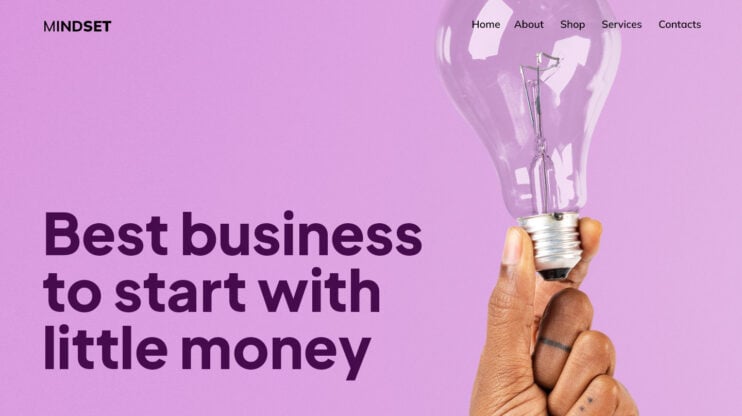B2B ecommerce refers to online transactions between businesses. It’s a digital marketplace where companies buy and sell products or services from each other.
B2B ecommerce platforms let manufacturers, wholesalers, and retailers do business online without face-to-face meetings.
These platforms offer many tools to make buying and selling easier. They handle things like inventory tracking, sales processing, and customer support.
B2B ecommerce is different from B2C (business-to-consumer) sales. B2B deals often involve larger orders, more complex pricing, and longer-term relationships.
By exploring this article, you’ll gain valuable knowledge on leveraging B2B ecommerce to enhance operational efficiency, build stronger business relationships, and tap into new revenue streams. Embracing the opportunities within B2B ecommerce can position your business for sustained growth and innovation in the digital age.
FAQ
What are some examples of B2B ecommerce?
B2B ecommerce examples include wholesale marketplaces, manufacturing supply chains, and software providers. Examples are Alibaba for global wholesale and Salesforce for cloud-based solutions.
Which platforms are best for B2B ecommerce?
Popular platforms include Shopify Plus, Magento, and 10Web’s AI Ecommerce Website Builder, which offers scalable, customizable solutions with WooCommerce integration for seamless online store management.
What companies excel in B2B ecommerce?
Top B2B ecommerce companies include Alibaba, Amazon Business, and Salesforce. These companies provide advanced platforms for wholesale, corporate purchasing, and cloud solutions.
What is the typical B2B ecommerce model?
The typical B2B ecommerce model focuses on bulk transactions, negotiated pricing, recurring orders, and partnerships, often supported by advanced inventory management and account-specific pricing.
How do I develop a B2B ecommerce strategy?
A strong strategy includes identifying target clients, choosing the right ecommerce platform like 10Web for advanced AI tools, optimizing the user experience, and streamlining operations like payment and shipping.
What is the current B2B ecommerce market size?
As of recent data, the B2B ecommerce market exceeds $6.9 trillion globally, driven by digital transformation and scalable ecommerce solutions like those offered by 10Web.
How can I start a B2B ecommerce business?
Start by identifying your niche, choosing a platform like 10Web’s AI Builder for automated setup, establishing a website, and streamlining operations like shipping, payment, and customer management.
What are the key characteristics of B2B ecommerce?
B2B ecommerce features include bulk purchasing, tiered pricing, account management, and streamlined operations for efficiency, often managed via platforms like 10Web with advanced ecommerce tools.
How does B2B ecommerce differ from B2C?
B2B focuses on businesses as customers, involving larger order volumes, account-based pricing, and longer sales cycles, whereas B2C targets individual consumers with straightforward pricing and faster sales.
Is Amazon a player in the B2B ecommerce space?
Yes, Amazon Business is a major B2B platform, offering businesses access to wholesale pricing, bulk purchasing, and customizable procurement solutions.

Create your online store in minutes!
Looking to sell online? Develop and launch your store with 10Web AI Ecommerce Website Builder.
Understanding B2B ecommerce
B2B ecommerce refers to online transactions between businesses. It has changed how companies buy and sell products and services to each other. This digital approach offers new ways for businesses to connect and trade.
Definition and scale
B2B ecommerce is when businesses sell products or services to other businesses online. It includes sales through websites, online marketplaces, and other digital channels. This type of commerce has grown a lot in recent years.
The B2B ecommerce market is getting bigger and bigger. Many companies now prefer to buy supplies and materials online. It’s faster and often cheaper than traditional methods. B2B ecommerce can involve large orders and repeat purchases. Some common examples are:
- Office supplies
- Industrial equipment
- Raw materials
- Software services
What’s the difference between B2B vs. B2C?
B2B ecommerce is different from B2C (business-to-consumer) in several ways. B2B deals often involve larger orders and more complex buying processes. Here are some key differences:
- Buyers: B2B customers are usually professional purchasers or teams.
- Sales cycle: B2B sales take longer and may need multiple approvals.
- Pricing: B2B often uses custom pricing or volume discounts.
- Payment: B2B typically offers credit terms or ifwnvoicing.
- Relationships: B2B focuses on long-term partnerships.
B2B websites also look different. They often have features like account management, reorder tools, and detailed product specs. These help business buyers make informed decisions and manage their purchases efficiently.
The history of B2B ecommerce
B2B ecommerce has changed how businesses buy and sell from each other. It started with basic online catalogs and has grown into complex digital marketplaces.
In the past, B2B sales relied on face-to-face meetings, paper catalogs, and phone orders. This was slow and limited in reach. The internet changed everything in the late 1990s. Early B2B websites simply listed products online. They didn’t offer much interactivity or real-time inventory.
As technology improved, so did B2B ecommerce. By the mid-2000s, sites added shopping carts and online payments. This made buying easier, but the experience was still basic compared to B2C sites.
Technology advancements
New tech has transformed B2B ecommerce. Mobile devices let buyers place orders from anywhere. Cloud computing powers faster, more scalable platforms. AI and machine learning personalize the shopping experience.
Today’s B2B portals offer rich features:
- Real-time inventory and pricing
- Custom catalogs and pricing for each buyer
- Integration with ERP and CRM systems
- Self-service account management
These advances help B2B sellers meet changing buyer expectations. Millennials now make up a large share of B2B buyers. They want the same easy online shopping they get as consumers.
Examples of B2B ecommerce
B2B ecommerce involves online transactions between businesses. It takes many forms, from wholesale platforms to industry-specific marketplaces.
Types of B2B ecommerce
B2B ecommerce includes several key types. Wholesale platforms let retailers buy in bulk from suppliers. Marketplaces connect many buyers and sellers in one place. Manufacturer-distributor platforms streamline ordering for resellers. B2B2C models let businesses sell through other companies to reach end consumers.
Each type serves different business needs. Wholesalers focus on large orders and discounts. Marketplaces offer more choice and comparison. Manufacturer sites provide detailed product info. B2B2C expands reach to new customer segments.
Wholesale
Wholesale B2B ecommerce platforms help suppliers sell large quantities to retailers. Sites like Alibaba let retailers browse catalogs and place bulk orders. Suppliers list products with tiered pricing based on order size.
These platforms often have features for:
- Bulk ordering
- Custom pricing
- Reorder reminders
- Order tracking
Wholesalers benefit from expanded reach. Retailers get access to more suppliers and products. The process is more efficient than traditional methods.
B2B marketplaces
B2B marketplaces bring many buyers and sellers together online. Examples include Amazon Business and ThomasNet. These sites let companies:
- Compare products and prices
- Read reviews
- Get quotes
- Place orders
Marketplaces make it easier for small businesses to find suppliers. They also help sellers reach new customers. Some focus on specific industries like electronics or industrial equipment.
Manufacturing and distribution
Manufacturers and distributors use B2B ecommerce to connect with business customers. Companies like Grainger and McMaster-Carr offer online catalogs and ordering.
These sites often include:
- Detailed product specs
- CAD drawings
- Inventory levels
- Custom pricing
Customers can quickly find and order the parts they need. Reordering is simple with saved lists and order history. This improves efficiency for both buyers and sellers.
B2B2C ecommerce examples
B2B2C (business-to-business-to-consumer) bridges B2B and B2C models. A business sells to another company, which then sells to consumers. Examples include:
- Brands selling through retailers’ sites
- Software companies offering white-label products
- Dropshipping arrangements
This model lets businesses reach end customers without direct sales. It can expand market reach and tap into partners’ existing customer bases. B2B2C often involves customized storefronts or product offerings for each partner.
How to start a B2B ecommerce business
Starting a B2B ecommerce business requires careful planning and the right tools. Success comes from a solid foundation and smart growth strategies.
Business planning and ideation
A good business plan is key for B2B ecommerce startups. It should include market research, target customer profiles, and financial projections.
Identify a niche or gap in the market that your business can fill. Think about what products or services you’ll offer and how you’ll source them.
Set clear goals for your first year of business. These might include sales targets, website traffic goals, or the number of B2B clients you want to acquire.
Your plan should also cover marketing strategies, such as content marketing or paid ads.
Don’t forget about legal requirements. Choose a business structure like an LLC or corporation. Get any licenses and permits needed for your industry and location.
Selecting a B2B ecommerce platform
Picking the right ecommerce platform is a big decision. Look for one that can handle B2B-specific needs like bulk orders, custom pricing, and account management.
Some popular options include Shopify Plus, BigCommerce, WooCommerce, and Magento.
Consider these factors when choosing a platform:
- Ease of use
- Customization options
- Integration with other business tools
- Scalability as your business grows
- Security features
- Customer support
Test out a few platforms before deciding. Many offer free trials, so you can see how they work. Make sure the platform can grow with your business and won’t limit you in the future.
Growing and scaling
Once your B2B ecommerce site is up and running, focus on growth.
Build relationships with your business customers through excellent service and communication. Use email marketing to stay in touch and share new products or deals.
Improve your website’s search engine ranking to attract more customers. Create helpful content that answers questions your target audience might have. This can include blog posts, buying guides, or case studies.
As you grow, think about expanding your product line or entering new markets. Keep an eye on your inventory and order fulfillment processes.
You might need to upgrade your systems or partner with a third-party logistics provider as you scale up.
Always ask for feedback from your B2B customers and use it to improve your offerings. Stay on top of industry trends and be ready to adapt your business as needed.
B2B ecommerce platforms
B2B ecommerce platforms help businesses sell products to other businesses online. These tools make buying and selling between companies faster and easier.
Types of ecommerce platforms
There are several types of B2B ecommerce platforms:
- Self-hosted: Companies install and manage the software on their own servers. This gives more control but requires more technical skill.
- Cloud-based: The platform provider hosts the software. This is easier to set up and maintain.
- Open-source: The code is free to use and modify. This allows for customization but may need more development work.
- SaaS (Software as a Service): Companies can use pre-built platforms for a monthly fee. These are quick to set up but may have less flexibility.
Each type has pros and cons. The best choice depends on a company’s needs, budget, and technical abilities.
Features of B2B ecommerce platforms
B2B ecommerce platforms offer many features to help businesses sell to other businesses:
- Bulk ordering: Lets buyers purchase large quantities at once.
- Custom pricing: Shows different prices for different customers.
- Account management: Allows companies to set up and manage business accounts.
- Integration: Connects with other business systems like inventory and accounting software.
- Product catalogs: Displays detailed product information and specs.
- Order tracking: Lets buyers see the status of their orders.
- Payment options: Supports various payment methods like credit cards and purchase orders.
Choosing the right platform
Picking the best B2B ecommerce platform takes careful thought. Here are some steps to help:
- List your needs: Write down what features your business must have.
- Set a budget: Decide how much you can spend on the platform.
- Check integrations: Make sure the platform works with your other business tools.
- Look at scalability: Choose a platform that can grow with your business.
- Read reviews: See what other users say about each platform.
- Try demos: Test out different platforms to see how they work.
- Consider support: Check what kind of help the platform offers if you have problems.
Take your time to find the right fit. The best platform will make selling to other businesses smoother and more efficient.

Create your online store in minutes!
Looking to sell online? Develop and launch your store with 10Web AI Ecommerce Website Builder.
Key components of B2B ecommerce
B2B ecommerce platforms have several important parts that work together. These components help businesses sell products to other companies online and manage customer relationships.
Online catalog management
Online catalogs are a key part of B2B ecommerce. They show all the products a company sells in one place.
Good catalog management makes it easy for buyers to find what they need.
B2B catalogs often have more details than regular online stores. They include things like bulk pricing, minimum order amounts, and product specs.
Many B2B platforms let sellers customize catalogs for different customer groups.
Sellers can update their catalogs quickly when prices or stock levels change. This keeps information current for buyers. Some systems also allow customers to see real-time inventory levels.
Customer relationship management
Customer relationship management (CRM) tools help B2B sellers work with their clients. These systems store important customer data in one place. This includes contact info, order history, and account settings.
CRM features in B2B ecommerce platforms can:
- Track sales leads and opportunities
- Manage quotes and contracts
- Set up custom pricing for each client
- Handle customer service issues
Good CRM tools make it easier for sales teams to follow up with clients. They also help create a smooth buying experience.
Buyers can see their past orders, track shipments, and reorder items quickly.
Many B2B platforms connect CRM data with other business systems. This gives companies a full view of their customer relationships.
B2B ecommerce operations
B2B ecommerce operations involve key processes that keep online businesses running smoothly. These include filling orders quickly and managing stock levels to meet customer needs.
Order fulfillment and logistics
Order fulfillment is a big part of B2B ecommerce. It starts when a customer places an order and ends when they receive their items.
Many B2B companies use special software to track orders from start to finish. This helps them ship products faster and avoid mistakes.
Some businesses handle shipping themselves, while others use third-party logistics (3PL) providers.
3PLs can often ship orders more cheaply and quickly. They have giant warehouses and shipping deals that save money.
B2B orders are often larger than B2C ones. This means companies need sound systems to pack and ship bulky items. They might use pallets or freight shipping for big orders.
Inventory management
Good inventory management is key for B2B ecommerce success. Companies need to know what’s in stock and what’s running low. This helps them avoid selling items they don’t have.
Many B2B businesses use inventory management software. This tracks stock levels in real-time. It can also:
- Show which products sell the fastest
- Predict when to reorder items
- Sync inventory across multiple warehouses
Some companies use “just-in-time” inventory. This means they order products only when needed. It can cut storage costs but requires careful planning.
B2B firms often deal with complex product catalogs. They might have thousands of items with different versions. Good inventory systems help manage these large product lists.
Marketing and sales in B2B ecommerce
B2B ecommerce requires special marketing and sales approaches. These methods help businesses reach other companies and close deals online. The right mix of digital marketing and sales channels can boost a B2B ecommerce company’s success.
Digital marketing strategies
Content marketing is key for B2B ecommerce. It helps companies stand out and bring traffic to their online stores.
Businesses can create content like blog posts, whitepapers, and case studies to show their expertise. This builds trust with potential buyers.
Email marketing is another powerful tool. Companies can build lists of business contacts and send targeted messages.
These emails can highlight new products or share helpful tips. They’re a great way to stay in touch with customers and leads.
Social media also plays a role in B2B marketing. LinkedIn is especially useful for connecting with other businesses.
Companies can share updates, join industry groups, and network with potential clients.
Sales channels
B2B ecommerce sales often happen through online portals. These are websites where businesses can log in to place orders.
The portals may offer features like custom pricing and bulk ordering.
Some B2B companies use marketplaces like Amazon Business. These platforms give access to a wide range of buyers. They can be a good way to reach new customers.
Many B2B sales still involve personal contact. Sales reps may use video calls or online demos to show products.
They can answer questions and help close deals, even if the final purchase happens online.
Customer experience in B2B ecommerce
B2B ecommerce platforms are changing how businesses interact with their customers online. They offer tools to personalize the buying process and provide better support.
Personalization
B2B buyers expect customized experiences similar to B2C shopping. Ecommerce platforms can tailor product recommendations based on past purchases and browsing history. This helps buyers find relevant items quickly.
Personalized pricing is another key feature. B2B platforms can show contract-specific prices and volume discounts for each customer.
They can also:
- Display custom catalogs with only approved products for certain clients.
- Use customer data to create targeted marketing campaigns.
Emails and ads can promote items a business is likely to need soon. This personal touch can boost sales and customer loyalty.
Customer support
Good support is vital in B2B ecommerce. Many platforms offer live chat for quick answers to simple questions. Video calls let support staff show solutions in real time for complex issues.
Self-service options are also important. Detailed product info, FAQs, and how-to guides help customers solve problems on their own. This saves time for both buyers and sellers.
Order tracking is another crucial support feature. B2B buyers need to know exactly when items will arrive. Real-time updates on shipment status can reduce support calls and improve customer satisfaction.
Data analytics in B2B ecommerce
Data analytics helps B2B ecommerce companies make smart choices. It gives insights into customer behavior, sales trends, and ways to boost profits.
Leveraging big data
B2B ecommerce generates a lot of data from various sources. This includes customer info, order history, website traffic, and inventory levels. Big data tools can process this information quickly.
Companies use big data to spot patterns and trends. They can see which products sell best and when. This helps with inventory planning and pricing strategies. Big data also shows how customers move through the sales funnel.
Businesses can use this knowledge to improve their websites and marketing. They can make personalized product recommendations. This often leads to more sales and happier customers.
Predictive analytics
Predictive analytics uses past data to guess future trends. It helps B2B companies plan ahead and stay competitive.
These tools can forecast demand for products. This allows businesses to stock up at the right times. They can avoid running out of popular items or having too much inventory.
Predictive models can also spot which leads are most likely to buy. Sales teams can focus on these prospects to close more deals. The models may suggest the best times to contact customers or the best offers.
Some systems can predict when a customer might leave. This lets companies take action to keep valuable clients.
Predictive analytics can also help set prices based on market trends and competitor data.
Payment solutions in B2B ecommerce
B2B ecommerce platforms need strong payment options to handle complex business transactions. These systems must process payments and manage credit for buyers.
Payment processing
B2B ecommerce sites use several payment methods. Credit cards are common for smaller orders.
Wire transfers work well for big purchases. Some companies take digital wallets like PayPal.
Many B2B sellers now offer multiple payment choices. This helps them meet different customer needs.
Flexible options can boost sales and customer happiness.
Security is key for all B2B payments. Sellers must protect sensitive data like bank details. They must also follow laws and policies about responsibly storing payment info.
Credit management
Credit is a big part of B2B sales. Many buyers want to pay later, not right away. This helps their cash flow but creates risk for sellers.
Good credit systems check buyer history before giving terms. They set spending limits based on past purchases.
Some use outside credit reports to assess risk.
Smart credit tools can automate approvals for trusted clients. They may ask for more info on new or risky orders.
The goal is to balance sales growth with financial safety.
Credit management also includes chasing late payments. Automated reminders can help get money faster.
Clear policies on late fees and cutoffs are important, too.
Security and compliance in B2B ecommerce
B2B ecommerce platforms need strong security measures and must follow many rules. This keeps customer data safe and builds trust with business partners.
Data security
B2B ecommerce sites handle sensitive info like payment details and trade secrets. They need top-notch security to stop hackers and data breaches.
Good practices include:
- Using encryption for data in transit and storage
- Setting up firewalls and intrusion detection systems
- Doing regular security tests and updates
Many B2B platforms now use AI to spot odd patterns that might mean fraud. They also let companies set custom user roles and access levels.
Regulatory compliance
B2B ecommerce must follow many laws and industry standards. These rules change based on the type of business and where it operates.
Key compliance areas are:
- Payment Card Industry Data Security Standard (PCI DSS) for credit card processing
- General Data Protection Regulation (GDPR) for EU customer data
- Health Insurance Portability and Accountability Act (HIPAA) for healthcare info
Companies need to train staff on these rules. They should also work with lawyers to make sure they follow all relevant laws.
Staying compliant helps avoid fines and keeps customers’ trust.
How to create a B2B ecommerce website
10Web is a robust platform designed to simplify the process of building, managing, and optimizing a B2B ecommerce website.
With the AI-powered Ecommerce Website Builder, integration with WooCommerce, and performance-enhancing 10Web Booster, 10Web empowers businesses to create fast, scalable, and secure online stores tailored to their specific B2B needs.
Whether you’re managing bulk orders, integrating advanced payment options, or building a streamlined ordering system for business clients, 10Web provides the tools to excel in the B2B ecommerce space.
Key features for B2B ecommerce:
- AI Website Builder: Create fully customized websites tailored to B2B needs, without relying on pre-made templates.
- WooCommerce integration: Add powerful features like bulk pricing, client-specific catalogs, and advanced product management.
- Store management: Manage orders, products, customers, taxes, and shipping from one intuitive dashboard.
- Analytics and insights: Analyze top-performing products, revenue streams, and customer behavior to optimize your operations.
- Marketing and sales tools: Set up email campaigns, run ads, and manage acquisition channels to drive growth.
- PageSpeed Booster: Enhance website performance with fast Google Cloud hosting and optimization tools for a seamless user experience.
Creating a B2B ecommerce website with 10Web
Follow these steps to set up a B2B ecommerce website using 10Web’s AI Website Builder:
- Sign up on 10Web
-
- Visit 10Web and create a free account.
- Choose the “Get Started for Free” option to begin exploring the platform.
- Generate your website outline
-
- Describe your business, specifying it as a B2B ecommerce platform.
- The AI builder will create an initial outline, including relevant sections like the header, hero section, product catalog, and contact forms.
- Customize the website sections
-
- Edit, add, or remove sections to tailor the site to your business model.
- Leverage AI to generate or modify sections such as “Bulk Order Page” or “B2B Product Categories.”
- Integrate ecommerce features
-
- Enable WooCommerce to manage your B2B product catalog, pricing tiers, and client-specific features.
- Add widgets for pricing calculators, bulk order forms, and client dashboards.
- Set up payment and shipping options
-
- Define multiple payment methods suitable for B2B transactions, such as invoicing or ACH payments.
- Configure shipping zones and rates for regional and international delivery.
- Style your website
-
- Use the Ultimate UI Kit to customize colors, fonts, and layouts.
- Ensure the design aligns with your brand’s professional and corporate identity.
- Optimize website performance
-
- Activate the 10Web Booster to enhance page speed and improve the user experience.
- Test the site using analytics tools to ensure it’s fully optimized for business clients.
- Launch your website
-
- Connect your domain to the website.
- Test all ecommerce functionalities, such as product listing, order placement, and checkout flows.
- Launch your site and begin onboarding clients.
By leveraging 10Web’s AI-driven tools, you can create a dynamic and efficient B2B ecommerce website that drives growth and simplifies operations.

Create your online store in minutes!
Looking to sell online? Develop and launch your store with 10Web AI Ecommerce Website Builder.
Future trends in B2B ecommerce
B2B ecommerce is changing fast. New tech and shifting buyer habits are reshaping how businesses sell to each other online. Let’s look at what’s coming next.
Emerging technologies
AI and machine learning are big game-changers. They help personalize the shopping experience for business buyers.
Chatbots powered by AI can answer questions 24/7. This makes buying easier and faster.
Virtual reality (VR) is starting to pop up in B2B sales. It lets buyers see products up close without leaving their offices. This is great for oversized items like industrial machines.
Blockchain tech is making payments safer and quicker. It cuts out middlemen and speeds up international deals.
Voice search is growing, too. More B2B buyers are using it to find products and place orders hands-free.
Industry predictions
By 2027, experts predict U.S. B2B ecommerce sales will hit $3 trillion. This is a huge jump from where we are now.
Mobile buying will keep growing. More business buyers will use phones and tablets to shop and buy. Self-service options will become the norm. Buyers want to research, compare, and buy on their own. They don’t want to talk to sales reps.
Green practices will matter more. B2B buyers will pick sellers who care about the earth.
Omnichannel selling will be key. Businesses that sell smoothly across websites, apps, and in-person will win more customers.
In summary, B2B ecommerce represents a transformative shift in how businesses interact, transact, and grow in the digital age. By leveraging the right platforms, adopting tailored strategies, and staying ahead of industry trends, companies can streamline operations, enhance customer relationships, and unlock significant growth potential.
This comprehensive guide has highlighted the key aspects of B2B ecommerce—from its defining characteristics to its strategic implementation and future innovations. As the landscape continues to evolve, embracing B2B ecommerce is not just an opportunity but a necessity for businesses seeking to thrive in a competitive, connected world.

Create your online store in minutes!
Looking to sell online? Develop and launch your store with 10Web AI Ecommerce Website Builder.












